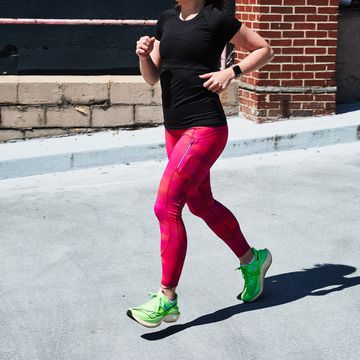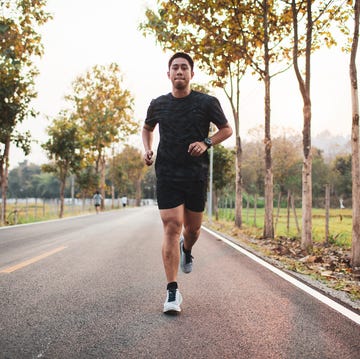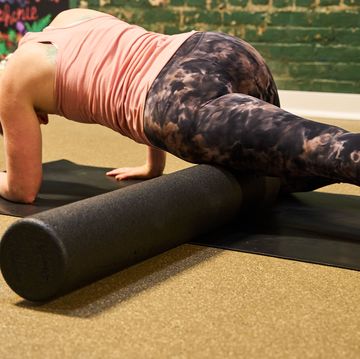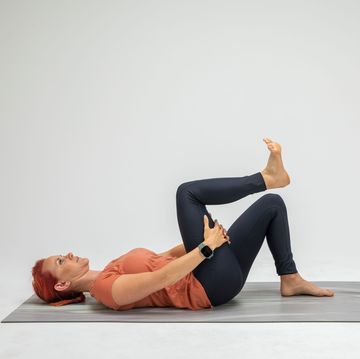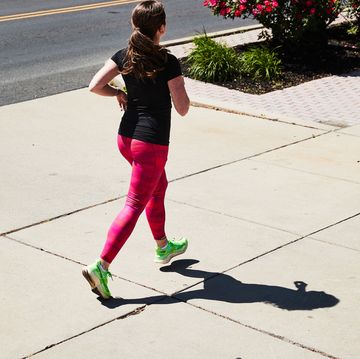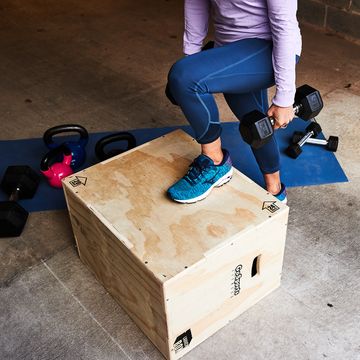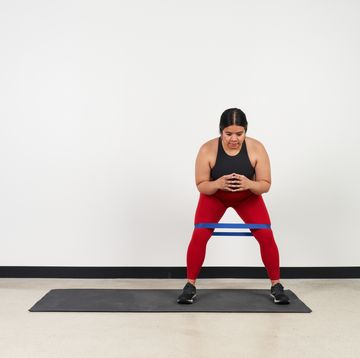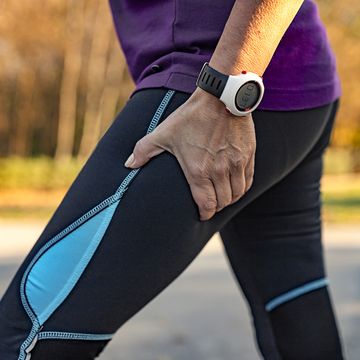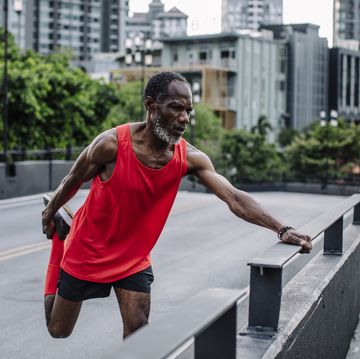So you trained well for an important race, got yourself into great shape and cruised through the first half of the course without problems -- and were on pace for a very fine PR. All of a sudden, you began to notice an ominous tightness in one of your hamstrings. At first, it was a tiny hindrance that could be ignored, but the tightness got steadily worse, step by step, until your hamstring was a stiff, painful mass of tissue that cried out for you to stop.
You slowed down, you stopped to stretch, massaged it, but nothing really helped. Realizing that this was the end of your race, you limped to the finish, disappointed and discouraged that after six months of careful, time-consuming preparations, some strips of muscle tissue in the back of your thigh had kept you from reaching your goal. Does this sound familiar?
Hamstring difficulties are common among runners, with strains, "pulls," tendinitis and tears the most common maladies. Why are hamstring issues so common? Most distance runners have developed a situation known as "quad dominance," a situation that occurs when the quad muscles overpower the action of the hamstrings in the movement of the leg during a running stride.
Logging a lot of miles on the roads can place repetitive functional overload on the quadriceps, making them strong, powerful and dominant. When the quadriceps contract as you land, the opposing muscles, the hamstrings, act as brakes to stop your knee from hyperextending at the end movement of a stride.
The quad works when the knee is locked out in extension with movement taking place at the hip (the forward swing of a stride). As you run, the quads work together with the hip flexors to flex the hip. In addition, when the hip is fixated with movement taking place at the knee (when the leg is planted on the ground), the quads function as extensors of the knee.
If your hamstrings are significantly weaker than your quads, due to a constant loading of the anterior (frontal) chain from running, then one of two things will occur: 1) Your hamstrings will tear as a result of not being able to take the load developed by the contracting quadriceps and momentum from hip extension; 2) You will run slower as a result of diminished power from the hip flexors and knee extensors as the hamstrings have to contract earlier to be able to break the ensuing movement.
Unfortunately, once you get yourself into this quad-dominating mess, it's hard to reverse. Hamstring injuries are rather slow to heal, and athletes often spend several weeks resting or carrying out alternative activities before they are able to train without much pain. However, like many muscular injuries, hamstring misery tends to return again and again, especially since most runners fail to address the underlying cause of their difficulties.
When the quadriceps are concentrically contracting (as you land), the hamstrings need to be eccentrically contracting to check the movement. It has been shown that concentric contractions will have limited appreciable gains in strength for yielding activities. For this reason, focusing upon eccentric loading is critical.
By executing a proper strengthening program for the hamstrings using a series of specific, isolated, eccentric exercises -- those in which muscle fibers lengthen as they contract -- you can eliminate the quad dominance, and keep yourself healthy, powerful and fast. You can start with the three easy hamstring exercises spelled out on the next page.
HAMSTRING EXERCISES
The eccentric exercises here will strengthen the hamstrings while the muscles actively lengthen by simulating the "catch" of a leg's swing phase while running. Perform each of these exercises 8–12 times for 3–4 sets. Focus on moving from the core, and remember that the emphasis is on the eccentric part of the motion.
01. Good Morning
a) Start with your legs locked, arms holding a weight bar on your shoulders with opposing grip, back in neutral position and core tight.
b) Slowly bend over at the waist, gently feeling the stretch on the way down. Keep your torso fixed -- don't be tempted to droop your shoulders toward the ground in an attempt to look like you are going lower than you really are. Constantly keep the core tight to support your back.
c) On the way down, keep the barbell as close to your leg as you can to reduce the pressure on the lower back. Keep the back in the neutral position.
d) When you have gone as low as you can with your knees locked, start to go back up slowly. (Avoid the tendency to jerk upwards or arch your back. If you feel inclined to either, use less weight on the bar.)
e) For an advanced version, try this exercise one leg at a time by placing the non-exercising leg up onto a bench to your side.
02. Single-Leg Romanian Dead Lift
a) Stand holding a light dumbbell in front of you in your right hand, placing your weight on your right foot. Lean forward 15 degrees or so.
b) Keeping a slight bend in your right knee, your back flat and your chest out, lift your left leg straight out behind you as you lower your body over your right leg. Slowly slide the dumbbell down your quad to about mid-shin and, using your hamstring and glutes, lift your body back up to an upright position, keeping your weight on your right leg. Repeat for 8 to 12 reps, then switch hands and legs.
c) To advance this exercise, stand on a wobble board or Bosu with the same weight, or remain on the floor and increase the weight.
03. Eccentric Hamstring Curl (with a partner)
a) Kneel on a folded towel or a stack of exercise mats with your toes pulled toward your shins. Keep your hands in front of your chest. Your partner sits behind you, facing your back, pressing down on your lower legs with his hands.
b) Keep your core tight, chest up and hips forward so your body forms a straight line from your ears to your knees. Maintain this posture as you lower your torso toward the floor while resisting gravity with your hamstrings and calves. Control the range of motion as far as you can, catch yourself with your hands, then push off the floor to assist your hamstrings and glutes in pulling you back up to the starting position.
(If you do not have a partner, you can perform a similar exercise on a hamstring curl machine.)
A former All-American runner at Georgetown University, Sarah Scholl, Ed.M., trains athletes as a strength and speed coach, yoga teacher and sport psychologist in New Canaan, Conn.


